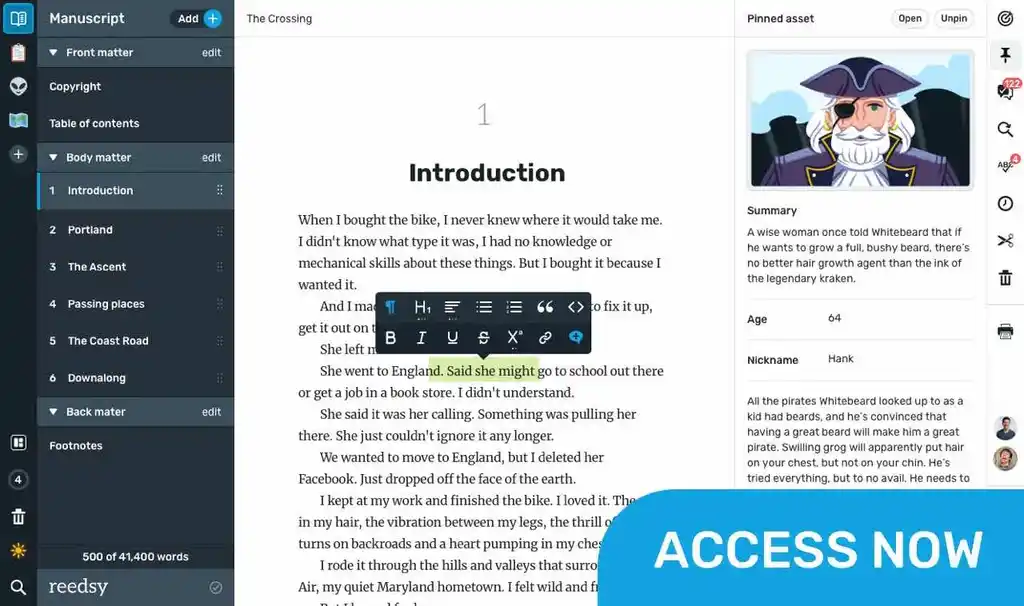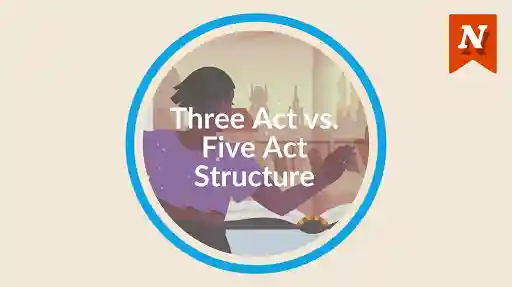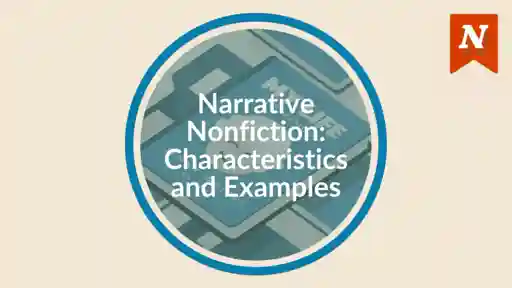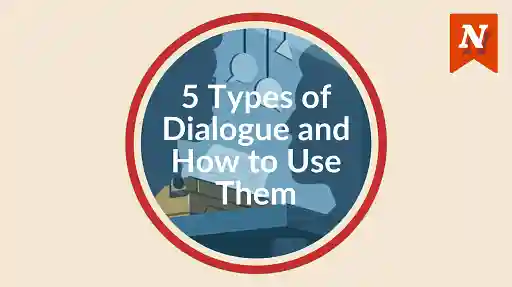In storytelling, plot development refers to the way the main events of a narrative unfold and progress. Think of the actions, conflicts, and resolutions that keep readers engaged throughout a story — that’s plot development.
Of course, there’s much more to a great plot than simply moving from A to B. Your story’s sequence of events should be designed to create suspense, tension, and a satisfying conclusion.
In this article, we'll walk you through it all, providing practical examples and actionable techniques that you can apply to your own writing. Ready? Let’s get into it.
1. Understand the elements of plot
First things first: in order to develop a plot, you’ll need to understand the specifics of what a plot actually is.
Fortunately, this is pretty straightforward. There are plenty of different plot structures out there, but they can all broadly be divided into six sequential elements:
- Exposition — where you introduce the setting, characters, and background.
- Inciting incident — the dramatic, world-altering event that sets the story in motion.
- Rising action — your protagonist faces a series of increasingly difficult challenges that build anticipation.
- Climax — the decisive moment when all that setup comes to a head.
- Falling action — where tension dissolves, and the consequences of the climax are explored.
- Dénouement — loose ends are tied up, and the story concludes.
Let’s take a look at every element in more detail, starting with the exposition.
2. Use action to reveal key details
Exposition can be tricky to tackle. You shouldn’t wait too long before getting to your explosive inciting incident, but if you haven't established your protagonist’s everyday normal beforehand, then your big, status-quo-shattering scene might fall flat.
Efficiency is the name of the game here. Your characters shouldn’t pause what they’re doing to explain something they both already understand purely for the reader’s benefit. Instead, seamlessly weave your exposition into action or dialogue in a way that feels natural.
🌌 Dialogue as exposition in Andor
Take the following exchange from the first episode of Disney’s Andor. After getting into some trouble the night before, Cassian needs an alibi. He goes to Brasso (whom the audience has not yet been introduced to), and the two share this exchange:
Cassian: What'd you do when you left [last night]?
Brasso: Uh, I was tired. I went home, cleaned up a bit, and then I fell asleep.
Cassian: No. … We decided we were thirsty … you still had half a bottle of nog stashed at home. So we went there and drank ourselves to sleep.
Brasso: You insulted my choice of beverage. As host and provider, I was offended by this … You've come here now to apologize.
Plot development? Check — Cassian has his alibi. But that’s not all that’s going on here.
With just this brief conversation, the audience comes to understand the relationship these two share. Cassian trusts Brasso to lie for his sake, and Brasso goes along with it, no questions asked. We’re shown, not told, how these two feel about one another… and we get some witty dialogue to boot!
Now that the stage has been set, it’s time for the action.
3. Hit your hero where it hurts
Remember: characters drive a story forward, not the other way around. When your inciting incident directly affects your protagonist’s life, relationships, or core values, it forces them to act. If your main character doesn’t have any skin in the game, your plot will feel arbitrary and disconnected from their journey.
To make your inciting incident feel personal to your protagonist, target what they value most. If a hero cherishes their family above all else, put their loved ones in jeopardy. Make your readers feel the sadness, anger, or desperation stemming from the inciting incident.
Connect these stakes to their backstory
Don’t stop at surface-level threats. The best inciting incidents will connect to your character's backstory. Perhaps our poor hero previously abandoned their partner during a dangerous mission. Now that same partner has returned, targeting the hero's family for revenge. An old wound has been reopened, forcing them to relive their greatest shame… but this time, they have a chance to make it right!
To really tie everything together, your inciting incident shouldn’t just kick off the external conflict, but your protagonist's internal conflict as well. To save their family, our cowardly hero must find the courage they lacked before. That way, overcoming the antagonist requires genuine personal growth, creating a climax that resolves both simultaneously.
Your hero might be knocked down, but they shouldn't remain there for long. There’s a long road ahead of them once they’re back on their feet, so next let’s explore how you can maintain momentum throughout your story.
4. Follow the "yes, but" and "no, and" rules
The rising action makes up the majority of a story, where tension escalates and the stakes climb higher. Many authors find themselves trapped in the “mushy middle”, where momentum starts to lag and direction becomes unclear. If you’re concerned that your story is suffering from some plot sag in the center, tighten it up by trying out this rule of thumb.
After every obstacle your protagonist faces, ask yourself: did your character succeed? If the answer is “yes”, it shouldn't be a total triumph — save that for the climax. Instead, some new complications should arise as a result of their temporary victory.
📚 “Yes, but…” in Yellowface
In R.F. Kuang’s Yellowface, we follow June Hayward, a struggling writer. After numerous failed attempts, June eventually releases a novel to glowing critical acclaim. So, did she succeed?
Yes, but…
June’s “success” only comes about because the book she published isn’t really hers — it was written by her deceased friend, Athena. This brings about a whole host of problems. June is paranoid about being discovered, she’s criticized for cultural appropriation, and she has to continuously compromise her morals in order to keep the truth hidden. Every minor win is followed by a fresh setback.
Similarly, if the answer is “no”, at least one major problem should spawn out of your character’s failure.
🏚️ “No, and…” in The Last House on Needless Street
In The Last House on Needless Street by Catriona Ward, Delilah Walters is on a mission to solve her sister’s disappearance. Suspicious of the reclusive resident that occupies the titular house on Needless Street, Delilah stages a break in to get some answers. You know the drill — does she succeed?
No, and…
Instead of evidence that links her neighbor to her sister’s unfortunate fate, Delilah finds a dilapidated home littered with bizarre signs of mental instability and deeply unsettling objects. This blunder doesn’t just fail to bring Delilah closer to the truth. It also draws unwanted attention to herself, leading her down a path racked with personal guilt and disturbing secrets.
5. Test your hero's development
Finally, you’ve made it to the top of the narrative mountain: the climax. On paper, this is simply the point where your main conflict is resolved, but there’s much more to it than that.
This is where the results of each of those 'yes, but' and 'no, and' moments you built up throughout your rising action come to a head. Think back to every trial your protagonist has faced so far, and consider how each one has contributed to their growth (for better or for worse). Distill all that development into a defining character moment. Use it to demonstrate how your hero has changed, and bring the external plot to its inevitable conclusion.
🎄 Scrooge’s arc in A Christmas Carol
Let’s examine Charles Dickens’ A Christmas Carol to understand what we mean here. Throughout the story, old Ebeneezer Scrooge is visited by the ghosts of Christmas Past, Present, and Future. The first reminds Scrooge of the hope he once had but has long since suppressed; the second teaches him the value of compassion and community; the third shows Scrooge that, if he continues along this path, no one will mourn his death.
When Scrooge awakens from his restless slumber, he puts into action every lesson the ghosts taught him. He laughs in delight for the first time in decades, donates money to his community, and seeks out genuine connection with his nephew over Christmas dinner. With this, both the internal conflict (Scrooge’s struggle with his own isolation) and the external conflict (his restrained relationships with the people around him) are wrapped up with a neat little bow.
Now that the storm is over and the skies are clearing up, it’s time to bring your story in for landing.
6. Address the aftermath
Take a moment to breathe… the dramatic peak of your story has come and gone. Done? Great. Now it’s time to descend the mountain and dive into the fallout.
There are two main kinds of consequences that you should address in the falling action your climax: the practical and the emotional.
Practical considerations
There are three main practical ramifications you’ll need to address. Start with any pressing physical repercussions — burning buildings should be extinguished, debris should be cleared, and injuries should be treated.
Second, handle any urgent plot threads that can’t wait for the resolution. Going back to our hypothetical hostage situation from earlier, confirming that our once-cowardly hero’s family is safe and sound should be a top priority.
Third, showcase the ripple effect that your climax has on the wider world. In a more intimate story, the “world” might just be your cast of loveable side characters. Meanwhile, the grand, sweeping narratives you might find in a sci-fi or fantasy novel will likely have much loftier social and political consequences for you to explore.
Some of these will apply more than others depending on your story (newlyweds in a romance are unlikely to be in any physical danger, for example), but it’s worth considering each one to cover your bases.
Emotional considerations
On the emotional side of things, start by showing your protagonist’s immediate reaction to the climactic moment, before it’s fully sunk in. This could be shock, relief, or devastation depending on the tone you’re trying to create. After that, give them some time to breathe and process what’s happened. Allow them to reflect on the events of the story and how they’ve changed because of them.
You don’t necessarily need to include an extended internal monologue here — actions speak louder than words (and thoughts!), after all. Speaking of which…
7. Show how your hero's life has changed
Finally, your story has come to a close. The dénouement is your chance to tie up any lingering loose ends, deflate any remaining residual tension, and show off the new normal that your protagonist has worked oh-so-hard to create.
Linking back to your opening is a great way to demonstrate how your hero has changed. By subtly mirroring (or contrasting!) elements that appear in your introduction, you can reveal their full arc of transformation, from beginning to end.
Change isn’t always visible
In some stories, this new state of affairs isn’t so new — or at least, it might not appear that way. Think of Bilbo returning to the Shire at the end of The Hobbit. Bilbo might be back to puffing his pipe and eating second breakfasts, but he’s not the same hobbit that left Bag End all that time ago. If any bothersome characters come knocking on his door, Bilbo can maintain his peace with the help of his handy ring — a token representing his transformation from homely hobbit to accomplished adventurer.
Of course, just because this story is over, that doesn’t necessarily mean your plot is done developing. If you think there’s some scope for a sequel, you can use this time to hint towards some future development down the line. Returning to our cowardly hero one last time: perhaps their former partner was a member of a shadowy organization. And they don’t take too kindly to an assault on one of their own…
With that heart-stopping cliffhanger, this post is complete. If you keep each of these steps in mind while writing, you’ll be a master of plot development in no time.











Plot is the most frightening part of writing. I just finished teaching a class on plotting and watched students develop good ideas and then struggle with the middle (muddle) as we all do. Keeping tension on every page seems to be the hardest to envision and relay. Excellent, more complex than usual, piece on plotting that I am passing on to help "the needy" in all writers.
Mahala Church - Over 8 years ago
Indeed, structural elements of writing are often challenging. Thank you for sharing your thoughts and your teaching experience, Mahala. All the best for your writing and classes!
Bridget At Now Novel - Over 8 years ago
Thanks so much for these helpful points on plotting. I am a newbie attempting to plot my debut novel. I read tons of craft books and they will all suggest to read critically to see how plotting works, yet none have mentioned what to look for when we do this. Perhaps they assume we already know yet if we've never done this before we need to know what questions to ask. These questions will help so much. I've written them down and will have them right next to my laptop. :)
Rebecca Vance - Over 8 years ago
Thanks so much, Rebecca. I'm glad to hear the suggestions here have helped. It's true, a lot of practical manuals assume a lot of familiarity with terms and processes. Good luck and enjoy!
Bridget At Now Novel - Over 8 years ago
Highly interesting. Would a good way to introduce characters be having them do something that ties into the plot later on? Like if growing flowers was a big subplot with meaning, then having them tend flowers in the beginning be a good way to start off?
Priscilla - Over 8 years ago
Hi Priscilla. Thanks for the question. Definitely, that's what we call foreshadowing and (if done well) it can create satisfying connective threads forwards and backwards in the plot arc of your story.
Bridget At Now Novel - Over 8 years ago
When it comes to plot twists, such as a character death, any advice?
Katie. G - Over 4 years ago
A WONDERFUL PIECE FOR A BEGINNER LIKE ME
Abban Enoch Johnson - Almost 4 years ago
Hi Abban, thank you. I'm glad to hear you found this helpful. Thank you for reading our blog and sharing your feedback.
Jordan - Almost 4 years ago